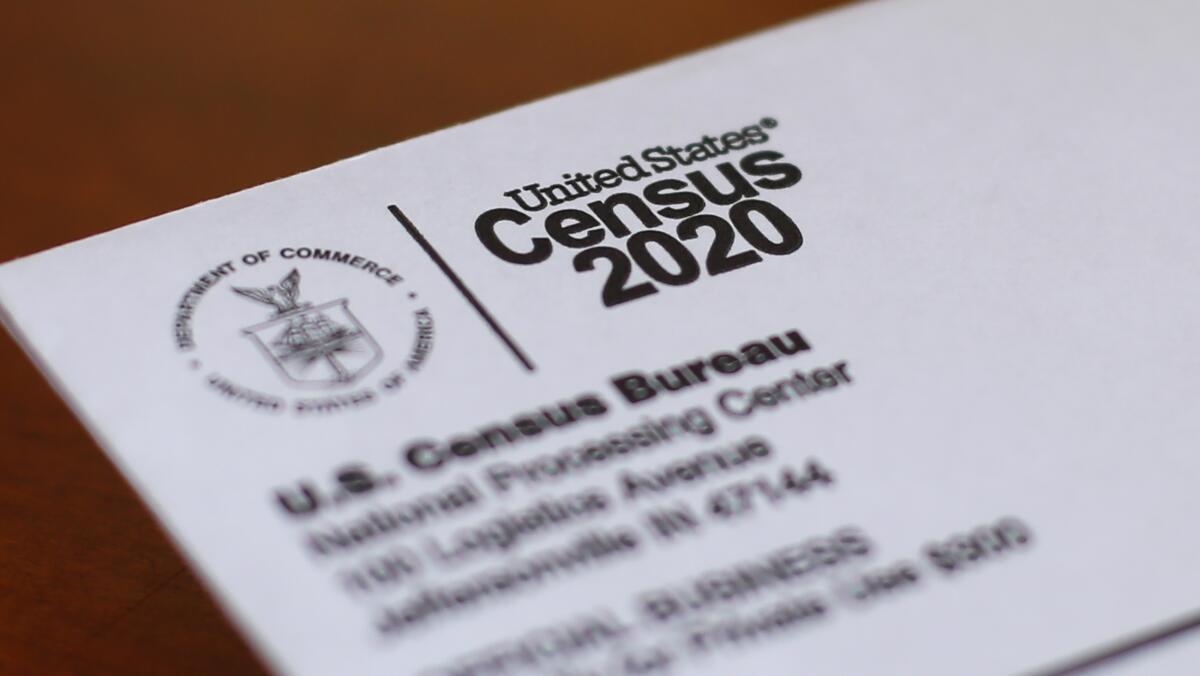Census document says cutting steps will be necessary to meet deadline, could result in errors

ORLANDO, Fla. — To meet an end-of-the-year deadline, some steps in the numbers-crunching phase of the 2020 census will need to be cut, and that could increase the risk for errors, according to an internal U.S. Census Bureau document made public Wednesday by House Democrats.
The internal document released by the House Committee on Oversight and Reform says that some efforts to meet the Dec. 31 deadline for turning in numbers used for redrawing congressional districts “represent abbreviated processes or eliminated activities that will reduce accuracy.”
The internal document was released as the House committee’s chairwoman, U.S. Rep. Carolyn B. Maloney, appealed to congressional leaders to extend deadlines that would give the Census Bureau more time to crunch the numbers used for apportionment, the process of redrawing congressional districts, and redistricting at the state and local levels.
Because of the pandemic, the Census Bureau revised its deadlines so the 2020 census would finish at the end of October. But the bureau last month shortened that deadline to the end of September. That came after it became clear the Republican-controlled Senate wouldn’t take up legislation passed by the Democratic-controlled House that would extend the Census Bureau’s deadlines for turning over apportionment numbers from the end of the year to the end of next April.
The Senate inaction coincided with President Trump directing the agency to exclude people in the country illegally from figures used for redrawing congressional districts, according to a lawsuit filed in San Jose seeking to stop the count from ending in September.
More than half a dozen other lawsuits are challenging Trump’s order, which civil rights groups say is unconstitutional and an attempt to limit the power of Latinos and immigrants of color.
“In light of this new internal document and the additional information we have obtained, it is more urgent than ever that the Senate act,” Maloney, a Democrat from New York, said in a letter to congressional leaders. “Congress has a solemn responsibility under the Constitution to help ensure an accurate and complete count, and there is bipartisan support in the Senate for extending these deadlines.”
The letter included partial transcripts from briefings last week that top Census Bureau officials gave to the House committee. At several points during the briefings, officials at the Commerce Department, which oversees the Census Bureau, stopped the officials from the statistical agency from answering the questions, the letter noted.
Although more time is always helpful, the door-knocking phase of the census has been much more successful than anticipated, said Tim Olson, associate director for field operations. During the door-knocking phase, census takers go to homes that haven’t yet responded to the census questionnaire either online, by phone or by mail.
“It’s too early to cry undercount. It’s too early,” Olson said.
Every risk that has been introduced because of the compressed schedule has been reduced and the Census Bureau is confident it will get an accurate count by the end of the month, said Al Fontenot, associate director for Decennial Census Programs.
The Census Bureau’s top brass were told by Deputy Commerce Secretary Karen Dunn Kelley at the end of July that Commerce Secretary Wilbur Ross wanted a new census plan that would deliver the apportionment numbers by Dec. 31, according to Ron Jarmin, the bureau’s deputy director and chief operating officer.
“We’re essentially running the same things that we were planning to do,” Jarmin told the committee. “We’re just doing them faster.”
More to Read
Get the L.A. Times Politics newsletter
Deeply reported insights into legislation, politics and policy from Sacramento, Washington and beyond. In your inbox three times per week.
You may occasionally receive promotional content from the Los Angeles Times.










